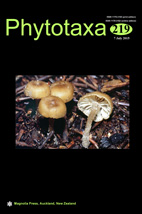Abstract
Gynodioecy, as intermediate sexual system, involves modifications of floral structure from hermaphrodites to dioecy. We here present the morphological differences in the sexual type of flowers concerning the terrestrial Persicaria amphibia as a gynodioecious species. Hermaphroditic flowers are relatively larger than female ones, and they produce viable pollen grains, while female flowers produce no viable pollen as male-sterility but increase female fitness by exerted pistil. Although female flowers had aborted stamens, the anther development at the early stage was normal until the late stage which the anther locule of female flowers was collapsed without forming pollen-like structures. The pilate-glandular trichomes could be diagnostic characteristic of female individuals since this type of trichome occurs only in leaves, stems, and pedicels of female plants. Excepting for the trichome type, the variance of microstructures was not significant between hermaphroditic and female plants.

